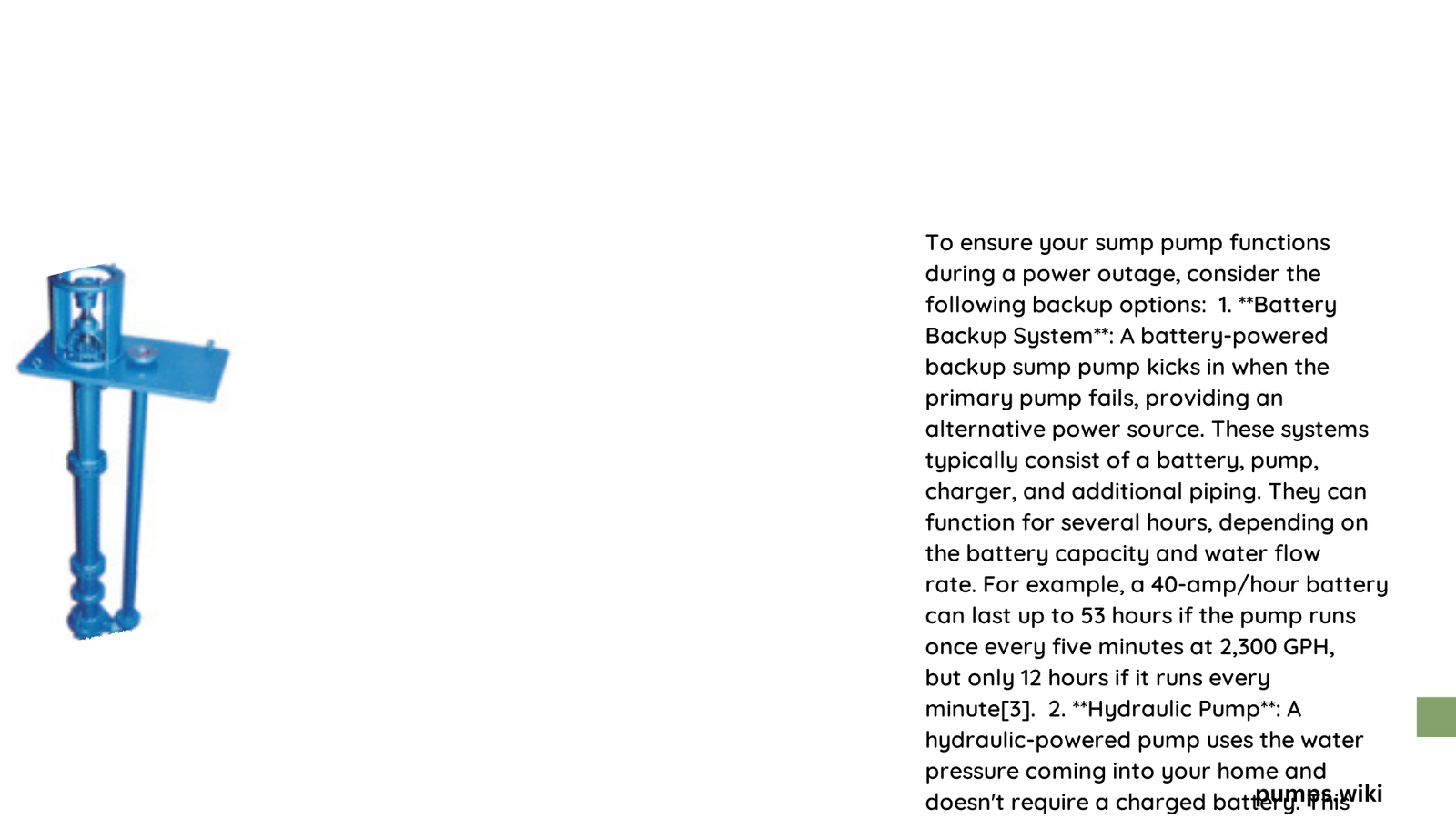A backup for sump pump if power goes out is crucial for protecting your home from water damage during electrical outages. These systems typically include a battery-powered pump that activates automatically when the main pump loses power. They can pump hundreds of gallons per hour, providing critical protection for basements and crawl spaces. This guide explores various backup options, their installation, efficiency, and cost considerations to help homeowners make informed decisions about protecting their property.
What Are the Best Backup Options for Sump Pumps During Power Outages?
When it comes to protecting your home from water damage during power outages, several backup options for sump pumps are available:
- Battery-powered backup systems
- Water-powered backup pumps
- Generator-powered backup systems
Let’s explore each option in detail:
1. Battery-Powered Backup Systems
Battery-powered backup systems are the most common and reliable option for sump pump backups. They consist of a secondary pump powered by a deep-cycle marine battery. Here are some popular models:
iON 30ACi+ Battery Backup Sump Pump System
- Pump Capacity: 2640 GPH at 10 feet, 2700 GPH at 0 feet
- Battery Requirements: One 12V deep cycle battery (not included)
- Run Time: Varies based on battery capacity, typically 8-10 hours with a 200Ah battery
STBB100 Automatic Emergency Backup Sump Pump System
- Pump Capacity: 29 GPM at 0′ lift
- Battery Requirements: 12V deep cycle battery (not included)
- Run Time: Several hours, depending on battery capacity
2. Water-Powered Backup Pumps
Water-powered backup pumps use municipal water pressure to create suction and remove water from the sump pit. They don’t require electricity or batteries, making them a reliable option during extended power outages.
Pros:
– No electricity or battery required
– Can run indefinitely as long as water pressure is maintained
Cons:
– Requires municipal water connection
– May increase water bill during operation
3. Generator-Powered Backup Systems
For comprehensive protection, some homeowners opt for a whole-house generator that can power the primary sump pump and other essential appliances during outages.
Pros:
– Powers multiple appliances, including the primary sump pump
– Long-term solution for extended outages
Cons:
– Higher initial cost
– Requires regular maintenance
How to Install a Battery-Powered Backup Sump Pump System?

Installing a battery-powered backup sump pump system involves several steps:
- Gather necessary tools and materials
- Prepare the sump pit
- Install the backup pump
- Connect the battery
- Install check valve and alarm system
- Test the system
Necessary Tools and Materials
- Backup sump pump system
- Deep cycle battery
- Battery cables
- Check valve
- Discharge pipe
- Drill and bits
- Wrenches and pliers
- Leveling tools
Step-by-Step Installation Process
- Prepare the Sump Pit
- Ensure the pit is large enough (minimum 18\” x 24\” for most systems)
-
Clean the pit and remove debris
-
Install the Backup Pump
- Place the pump in the pit, ensuring it’s level and secure
-
Connect the discharge pipe and direct it outside
-
Connect the Battery
- Connect battery cables to the backup system and deep cycle battery
-
Secure the battery in a non-corrosive battery box if provided
-
Install Check Valve and Alarm System
- Install a check valve to prevent backflow
-
Connect any alarm systems or indicators
-
Test the System
- Simulate a power outage to ensure proper operation
- Check for leaks or issues with the discharge pipe
Typical installation time is 2-4 hours, depending on complexity and expertise.
What Are the Efficiency Ratings of Sump Pump Battery Backup Systems?
Efficiency ratings for battery backup systems typically consider energy consumption and flow rate efficiency:
| System | Energy Consumption | Flow Rate Efficiency |
|---|---|---|
| iON 30ACi+ | 4 amps (115V) | 2640 GPH at 10 feet |
| STBB100 | 1 amp charger | 29 GPM at 0′ lift |
| SEC America 822PS | 25A start current capacity | Supports full primary pump capacity |
How Much Do Backup Sump Pump Systems Cost?
The cost of backup sump pump systems varies based on the model and features:
- Average Unit Prices
- iON 30ACi+: $800 – $1,200
- STBB100: $300 – $600
-
SEC America 822PS: $500 – $900
-
Installation Costs
-
Professional installation: $200 – $500
-
Maintenance Expenses
- Battery replacement every 5-7 years
-
Occasional system checks
-
Potential Long-Term Savings
- Preventing water damage can save thousands in repair costs
- Exact savings depend on frequency of power outages and system effectiveness
Investing in a backup for sump pump if power goes out is crucial for protecting your home from potential water damage. By understanding the options, installation process, efficiency ratings, and costs, you can make an informed decision to safeguard your property during power outages.
